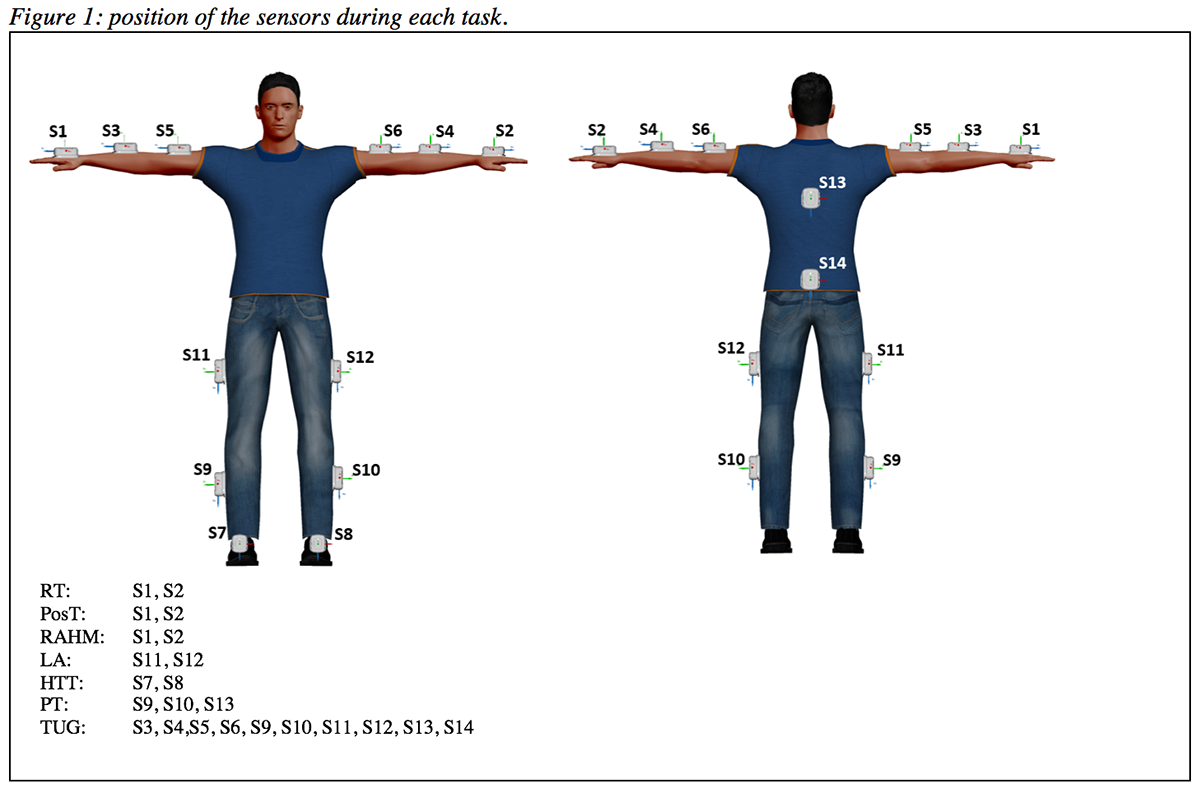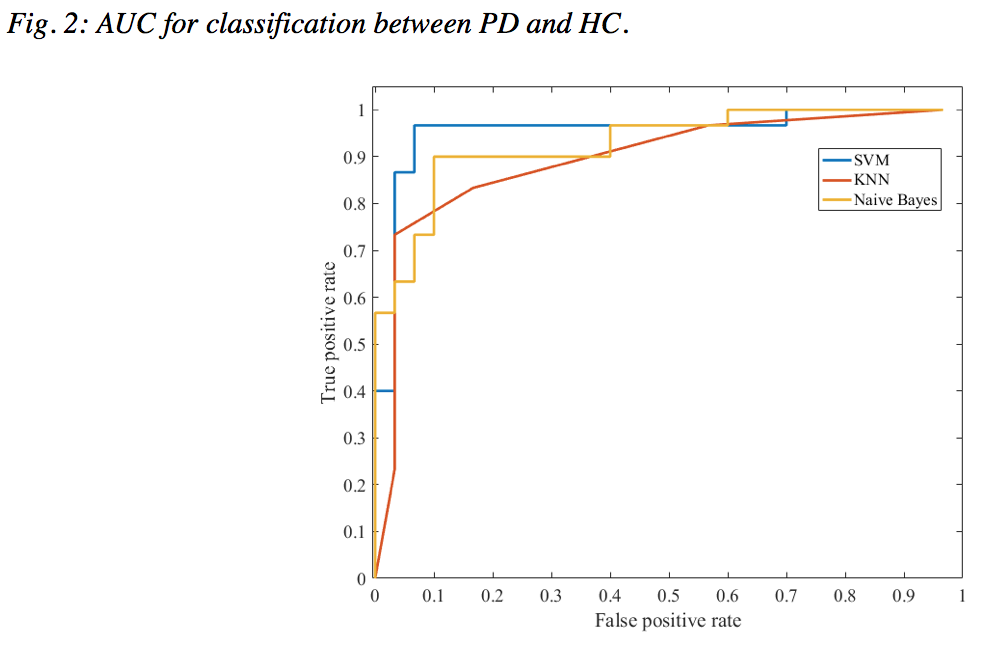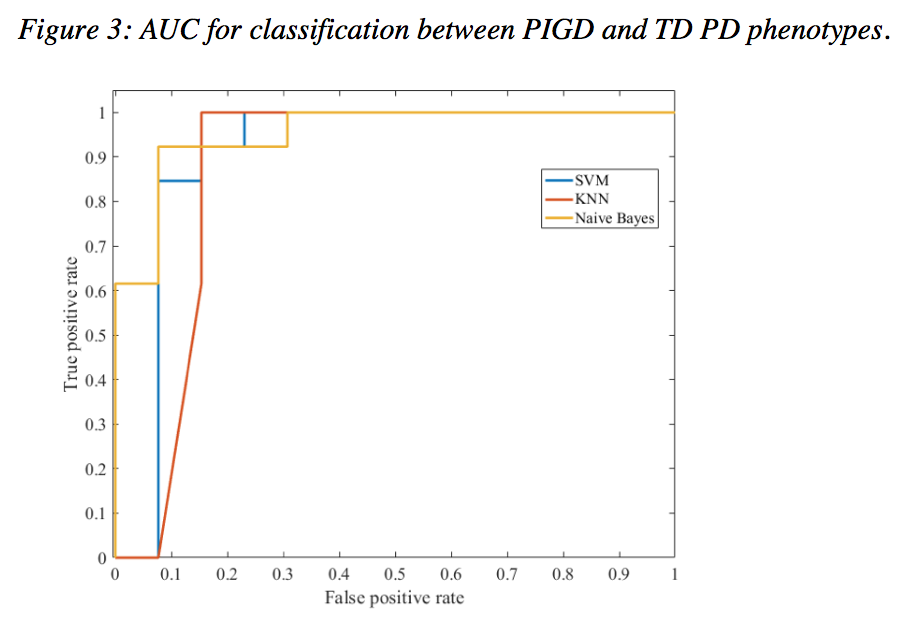Session Information
Date: Tuesday, September 24, 2019
Session Title: Classification of Movement Disorders
Session Time: 1:45pm-3:15pm
Location: Les Muses Terrace, Level 3
Objective: 1. To study motor functions in de novo drug-free Parkinson’s disease (PD) patients and healthy controls (HC) and find an algorithm able to distinguish these two populations even in early phases of the disease. 2.To early discriminate disease subtypes measuring selected, specific features from gait, posture, agility and coordination tasks.
Background: Currently, the diagnosis of PD is based on clinical evaluation and diagnostic certainty is impossible during life. A growing body of literature focused on technology-based objective measures (TOMs) of motor functions in PD patients, in order to support clinical evaluation, especially in later stages of the disease. However, there are few available data collected in the very early disease stage.
Method: 30 newly diagnosed, drug-free PD patients and 29 age and sex-matched HC were consecutively enrolled. They underwent neurologic examination and were assessed with UPDRS part II and III, Hoehn and Yahr staging, MMSE. Then, they performed 5 motor tasks selected from UPDRS III (rapid alternating hand movement – RAHM-, foot tapping -FT, heel-to-toe test -HTT-, timed-up-and-go test -TUG-, pull test -PT- respectively corresponding to items 3.6, 3.7, 3.8, 3.10, 3.12) wearing inertial sensors (-figure 1), to evaluate bradykinesia, gait and postural impairment. Several features from each task were analyzed. We chose Naïve Bayes, k-Nearest-Neighbor (kNN), and Support Vector Machine (SVM) classifier. Combining the results from ReliefF and Kruskal–Wallis, we selected the top features as the input vector to the classifiers.
Results: We identified two algorithms respectively to distinguish PD from HC and to identify different clinical phenotypes taking into account features from bradykinesia items, PT and TUG, with excellent accuracy (respectively 95% and 92% -figure 2 and 3).
Conclusion: Our algorithm proved to be able to distinguish de novo drug-free PD patients from HC with good accuracy, in early phases of the disease, when clinical diagnostic accuracy may not be optimal. In addition, we were able to differentiate apparently similar PD phenotypes, by measuring selected, specific features, such as gait, posture, agility and coordination tasks. Our data suggest that this approach could represent a novel tool for clinicians in improving diagnostic accuracy for a population of fragile patients.
References: E. Tolosa, G. Wenning, W. Poewe, The diagnosis of Parkinson’s disease., Lancet Neurol. 5 (2006) 75–86. doi:10.1016/S1474-4422(05)70285-4. M.A. Thenganatt, J. Jankovic, Parkinson disease subtypes, JAMA Neurol. 71 (2014) 499–504. doi:10.1001/jamaneurol.2013.6233. A.J. Espay, P. Bonato, F. Nahab, W. Maetzler, F. Horak, A.E. Lang, R. Reilmann, Technology in Parkinson disease: Challenges and Opportunities, Mov Disord. 31 (2017) 1272–1282. doi:10.1002/mds.26642.Technology.
To cite this abstract in AMA style:
G. Di Lazzaro, M. Ricci, T. Schirinzi, G. Saggio, NB. Mercuri, A. Pisani. Technology-based assessment of motor impairment in de novo Parkinson’s disease patients: implications for diagnostic accuracy and early identification of distinct phenotypes [abstract]. Mov Disord. 2019; 34 (suppl 2). https://www.mdsabstracts.org/abstract/technology-based-assessment-of-motor-impairment-in-de-novo-parkinsons-disease-patients-implications-for-diagnostic-accuracy-and-early-identification-of-distinct-phenotypes/. Accessed December 15, 2025.« Back to 2019 International Congress
MDS Abstracts - https://www.mdsabstracts.org/abstract/technology-based-assessment-of-motor-impairment-in-de-novo-parkinsons-disease-patients-implications-for-diagnostic-accuracy-and-early-identification-of-distinct-phenotypes/



